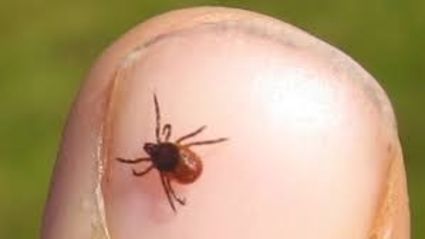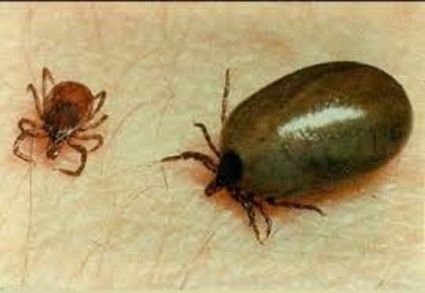Ticks in Michigan: What You Should Know
June 24, 2021

Ticks are tiny but dangerous if carrying infection, so do a self-check for them if you have been outdoors.
Scientists and researchers are saying Michigan is seeing an explosion of its tick population. When one thinks of ticks, you usually think they are only found up north or in wooded areas. That may have been the case 40 years ago, but in recent decades, ticks have been slowly expanding their territory to include most counties in Michigan. Some researchers blame the trend on climate change which is creating shorter, milder winters and longer warm-weather breeding seasons for ticks and other pests. Some ticks carry diseases including Lyme disease, Rocky Mountain spotted fever, and a host of other lesser-known diseases including Anaplasmosis, Babesiosis, which causes malaria-like symptoms, and Powassan disease.
According to the Michigan Department of Health and Human Services (MDHHS), in 2014 fewer than two dozen counties in the Upper Peninsula and along the western side of the state were considered to carry potential risk for Lyme disease. Just six years later in 2020, that number jumped to nearly 50 counties, including Wayne County. Not all tick bites will make you sick but it's good to know what to do if you spot one crawling on you.
Ticks are related to spiders and in Michigan, there are 20 known species of ticks. The most common are the American dog or wood tick and the Blacklegged or deer tick. Less common but also in our state are the Lone star tick and the Woodchuck tick. Ticks have three life stages: larvae, nymph, and adult. At all stages ticks can bite and will usually find a different host animal to feed on at each life stage, beginning with a small animal such as a mouse and eventually attaching to humans or large animals as an adult tick.
If a tick bites, it's likely you won't feel it, but rather will discover it attached to you. Ticks can stay attached for several days while feeding and swelling up with blood. Ticks prefer warm areas of the body like trunk and armpits. It's best not to panic and pull it off as the mouth parts can break off and remain burrowed in your skin, potentially causing infection. Remain calm and with a pair of fine-tipped tweezers, grasp the tick as close to the skin as possible and pull upward with a steady, even pressure. Flush the tick down the toilet. Wash the bite area thoroughly with soap and water.
If the tick was carrying disease, symptoms will begin to show within a few days to two weeks. According to the Centers for Disease Control (CDC), in most cases the tick must stay attached for more than 36 hours before the most common infection, Lyme disease can be transmitted. Early symptoms include a rash at the bite site, fatigue, chills and fever, headache, muscle and joint pain, and swollen lymph nodes. If these symptoms begin to appear, see your doctor. Antibiotics are the most common form of treatment.
Preventing Lyme disease and other tick-borne diseases is key. Try to avoid areas that are shady and moist and tall grassy areas, as ticks call these types of areas home. If you do spend time outdoors where ticks can be found such as parks or hiking trails, tuck your pant legs into your socks to keep ticks from hitching a ride inside your clothing. Wear light colored clothing so ticks can be easily spotted and remember to use insect repellent. Do a self-inspection when coming back indoors and remember to check pets as well, as ticks can pass infection to them too.

Ticks can swell to several times their normal size while feeding on a host which can be either you or your pet.
To find out more about ticks and the infections they can spread go to http://www.michigan.gov and enter Ticks in the search box. Another good source of information is http://www.cdc.gov/ticks.





Reader Comments(0)